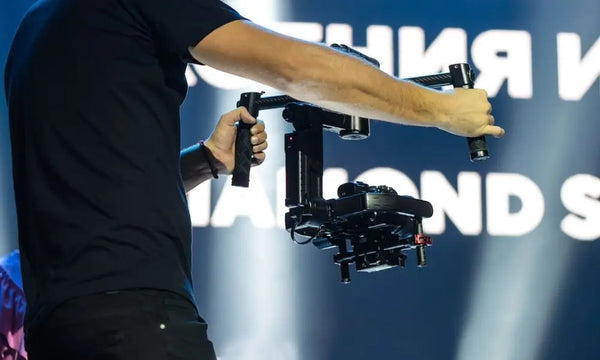
3-Axis vs. 5-Axis Gimbals: Compare and Contrast
As you go farther in your cinematic career and continue to upgrade your equipment, a 5-axis gimbal may catch your eye. More axes mean more features, right? Sure, but it also works a little differently than the 3-axis you’re used to. Let’s compare and contrast 3-axis and 5-axis gimbals. Which one will better suit your needs?
Compatibility
Because 3-axis camera gimbals have been on the market much longer than their 5-axis counterparts, more cameras and equipment will be compatible with them. If you use a 5-axis gimbal with a camera mount only designed for the 3-axis variety, you may only be able to use those three axes. However, as 5-axis gimbal technology grows in popularity, it’ll grow in compatibility.
Stability
So why are those two extra axes on a 5-axis gimbal such a big deal?
Look at the anatomy of a 3-axis gimbal. You’ve got the tilt (up and down), the pan (side to side), and the roll (round and round). Each axis helps you move the camera a different way.
A 5-axis gimbal has, of course, two additional axes that exist to stabilize camera movement. They’re there to correct any shaking or additional movement from the camera operator, and work specifically with the tilt and pan axes. You’ll see the most improvement when using a longer lens with a shorter distance; all those micro-movements get smoothed out.
End Result
Depending on the nature and style of your video footage, you could end up with polished, effortless shots. That extra stability is most pronounced when shooting from a short distance. Often, when you zoom in, the camera picks up more of the minuscule movements your hands make. The two extra axes in a 5-axis gimbal are there for movement correction.
But if you’re shooting from further away or with a shorter lens, three axes may be all you need. A 3-axis camera gimbal still provides top-quality motion detection and compensates for any jostling of the camera.
When you look to upgrade your camera equipment, shop smart. Know the features of all the products you’re looking at, and reflect on whether you need those features for your filmmaking needs. In the 3-axis vs. 5-axis gimbal debate, the answer lies in what you’re shooting and how you’re shooting it.
